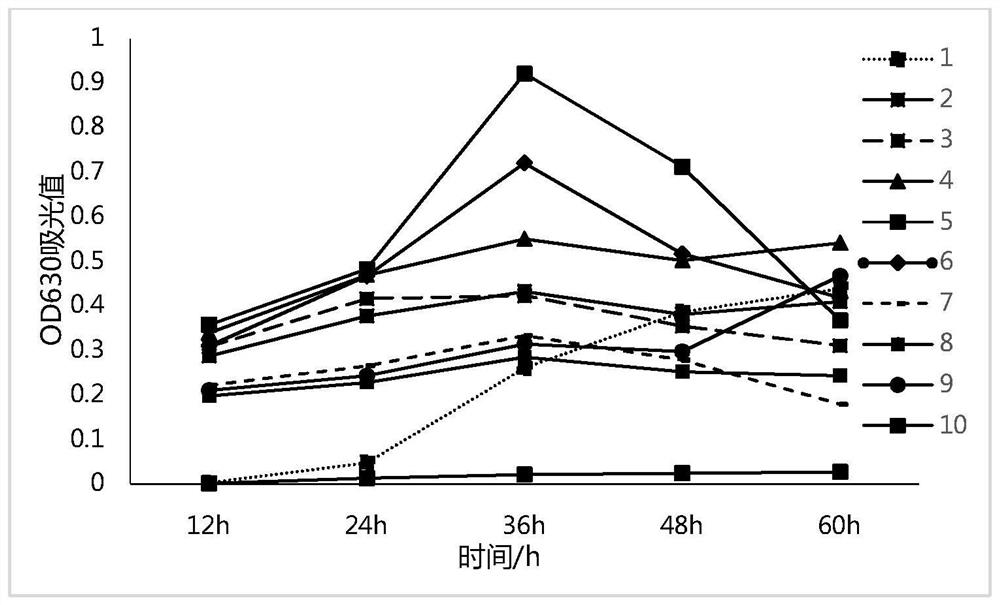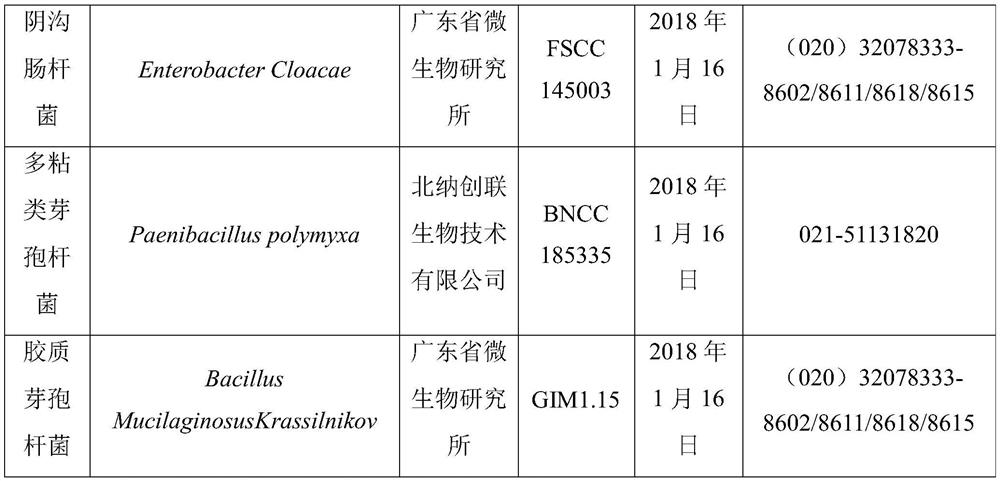A kind of biological bacterial fertilizer for strengthening phytoremediation of cadmium-contaminated soil and its application
A technology of cadmium-contaminated soil and biological bacterial fertilizer, applied in the restoration, application, organic fertilizer and other directions of polluted soil, can solve problems such as huge differences in the combined action of different plants, and achieve improved restoration efficiency, good restoration effect, and guaranteed restoration efficiency. Effect
- Summary
- Abstract
- Description
- Claims
- Application Information
AI Technical Summary
Problems solved by technology
Method used
Image
Examples
Embodiment 1
[0047] Embodiment 1 (experiment material: grain amaranth)
[0048] Table 5 Experimental results
[0049]
[0050] Harvest grain amaranth after the test, divide the plant into roots, stems and leaves successively, dry in an oven at a constant temperature of 105°C, measure the dry weight and heavy metal content of each tissue of the plant, as shown in Table 5, the results show that: apply the biological bacterial fertilizer of the present invention Compared with the non-applied group (Group A), the dry weight of the aerial part, the dry weight of the underground part, the transfer coefficient and the enrichment coefficient of the grain amaranth plants in the group (Group B) increased by 99.15%, 57.19%, 35.16% and 45.76%, respectively.
Embodiment 2
[0051] Embodiment 2 (experiment material: nightshade)
[0052] Table 6 Experimental results
[0053]
[0054] Harvest Solanum nigrum after the test, divide the plant into roots, stems and leaves successively, dry in an oven at a constant temperature of 105°C, measure the dry weight and heavy metal content of each tissue of the plant, as shown in Table 6, the results show that: apply the biological bacterial fertilizer of the present invention Compared with the non-applied group (Group A), the dry weight of the aerial part, the dry weight of the underground part, the transfer coefficient and the enrichment coefficient of the Solanum nigrum plants in the group (Group B) increased by 50.09%, 29.16%, 28.2% and 62.5%, respectively.
Embodiment 3
[0055] Embodiment 3 (experiment material: pokeweed)
[0056] Table 7 Experimental results
[0057]
[0058] Harvest Phytolacca plants after the test, divide the plants into roots, stems and leaves successively, dry them in an oven at a constant temperature of 105°C, measure the dry weight and heavy metal content of each tissue of the plants, as shown in Table 7, the results show that: apply the biological agent of the present invention Compared with the non-applied group (Group A), the dry weight of the above-ground part, the dry weight of the underground part, the transfer coefficient and the enrichment coefficient of the plants of the bacterial fertilizer group (Group B) increased by 46.83%, 63.56%, 41.39% and 66.67%, respectively. %.
[0059] The above three examples fully prove that the biological bacterial fertilizer of the present invention can improve the efficiency of three kinds of plants of grain amaranth, black nightshade and pokeweed to remediate cadmium-contam...
PUM
 Login to View More
Login to View More Abstract
Description
Claims
Application Information
 Login to View More
Login to View More - R&D
- Intellectual Property
- Life Sciences
- Materials
- Tech Scout
- Unparalleled Data Quality
- Higher Quality Content
- 60% Fewer Hallucinations
Browse by: Latest US Patents, China's latest patents, Technical Efficacy Thesaurus, Application Domain, Technology Topic, Popular Technical Reports.
© 2025 PatSnap. All rights reserved.Legal|Privacy policy|Modern Slavery Act Transparency Statement|Sitemap|About US| Contact US: help@patsnap.com



